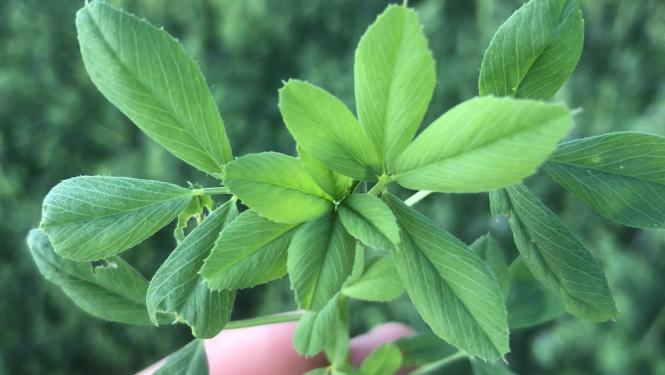Fall Dormancy
The lower the dormancy number the sooner the plant will go into dormancy with reduced daylight. June 21 is the longest day of the year. After that the days get shorter. Varieties with low fall dormancy numbers will begin dormancy and slow down in growth sooner in the fall compared to varieties with high fall dormancy numbers. Less dormant varieties (higher number) generally have higher yield potential, earlier maturity and increased rates of recovery after harvest.
| Rating | Dormancy |
|---|---|
| 1 | Very Dormant |
| 2-3 | Dormant |
| 4-6 | Intermediate Fall Dormancy |
| 7-9 | Non Dormant |
| 10-11 | Very Non-Dormant |
Winter Hardiness
Winter hardiness is a measure of the plants’ ability to survive the winter without injury. Winter injured plants may survive, but buds formed in the fall for spring regrowth may be killed. Such plants have fewer shoots for first cutting and produce lower yield.
| Score | Winter Hardiness |
|---|---|
| 1 | Superior (No injury) |
| 2 | Very good |
| 3 | Good |
| 4 | Adequate |
| 5 | Low |
| 6 | None (Plant death) |
Disease Rating
Disease Rating Index is very important, as most quality varieties are resistant to most common alfalfa diseases. There are six major alfalfa diseases, and each disease is rated in resistance from 1 to 5, with 5 being the most resistant. If a variety has the highest level of resistance to all six diseases, it would have a rating of 30:30. Some of our alfalfa varieties are rated out of a 35 point scale which includes aphanomyces race 2. Also, our alfalfas are now listed with their level of resistance to nematodes (SN- Stem Nematode, NRKN- Northern Root-knot Nematode, SRKN- Southern Root-knot Nematode). They are rated as: R-Resistant, HR-Highly Resistant, MR- Mild Resistance, NA- Not Available, NR- Not Rated.
| Rating | Resistance |
|---|---|
| R | Resistant |
| HR | Highly Resistant |
| MR | Mild Resistance |
| NA | Not Available |
| NR | Not Rated |
Emphasizing Weed Control During Alfalfa Establishment
Weed control in alfalfa is more critical during the seedling stage and the first year than any other period of the alfalfa’s life cycle. In many cases, alfalfa seedlings establish at a slower rate and can be overtaken by weeds, if they are present. If planting into a field with established weed pressure, alfalfa seedlings are outcompeted for nutrients, water and eventually sunlight; resulting in stand reduction. Since alfalfa stands naturally decline with age, it is very important to begin with the strongest stand possible to improve overall productivity and longevity.
Know The Weed History
The field history and the current weed pressure will determine the time frame in which alfalfa can be seeded. For example, fields infested with perennial weeds may not be well suited for alfalfa without multiple years of crop rotation to eradicate the weed.
Utilize Crop Rotation
It is best utilize crop rotation for 2 or 3 years after terminating an alfalfa stand to reduce disease, weeds and insect pressure. Planting alfalfa after only 1 year of rotation often results in a shorter stand life and greater expense in managing pest pressures. A 2-year rotation using crops that allow multiple herbicide applications is best for staging a productive alfalfa stand. In the case of perennial weeds, using annual crops such as barley and corn to smother the perennial weed for multiple seasons is an effective method of control.
